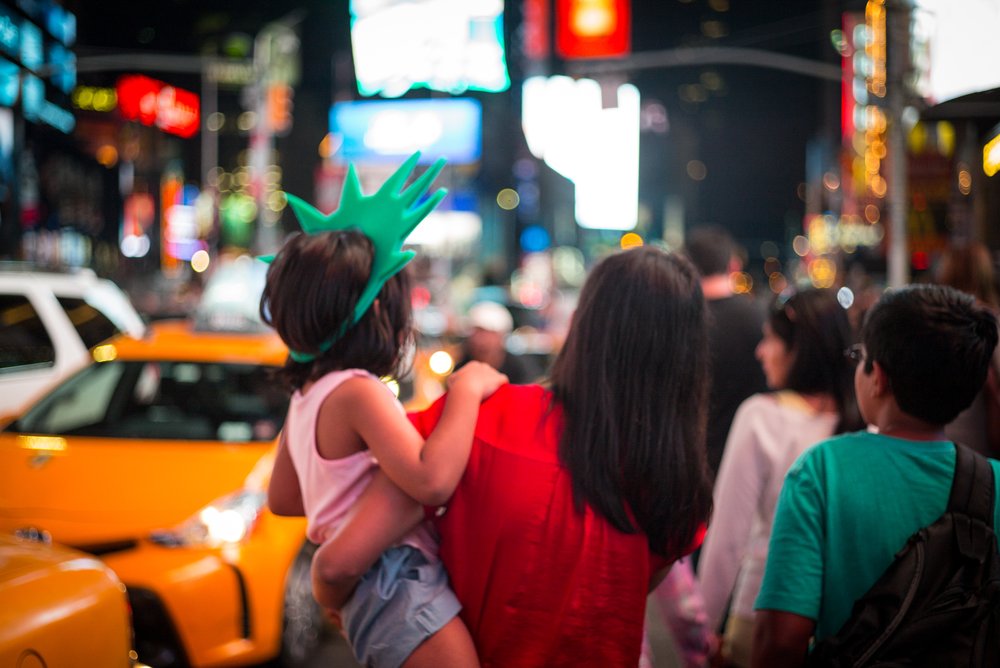5 ways to make NYC more affordable for families (without mentioning eggs)
March 17, 2025, 7:01 a.m.
The Center for an Urban Future offers policy prescriptions for keeping families in the city.

New York City needs to dramatically increase its stock of affordable three-bedroom apartments if it wants to halt the “exodus” of young families, according to a new report from the Center for an Urban Future.
The report, “5 Ideas for Retaining NYC’s Young Families,” addresses affordability challenges related to housing, schooling, child care and summer camp, mostly with modest government interventions.
The policy prescriptions, which include proposals for making child care more affordable and freeing up more large apartments, come as inflation and affordability issues have been top of mind for policymakers and consumers nationwide, no less in New York City.
Eli Dvorkin, editorial and policy director of the Center for an Urban Future, said New York City is “fantastic at attracting young people in their twenties, but we’re failing to keep them as they start their families.”
He added: “That’s a major risk to the city’s long-term economic strength, tax base and neighborhood stability."
A February analysis by the listings site StreetEasy found the median rent for a three-bedroom apartment in Manhattan was about $7,500 a month. Median rents ranged from $3,500 to just under $4,000 in the Bronx, Brooklyn and Queens, while they were about $3,000 in Staten Island, according to the analysis.
According to the report, the number of children under 5 in New York City experienced "a staggering" 18% fall between April 2020 and July 2023 — far greater than the decline experienced nationwide (4.6%) or in major cities like San Francisco (15.4%), Chicago (14.6%) and Los Angeles (14.2%).
In many cases, the report states, the decline was due to “an exodus of young families” to the suburbs or to other, more affordable states. Reversing this trend, the report argues, is critical for the city’s economy because many departing householders leave “as they enter their prime earning ages.”
“As they raise children, families also tend to be especially invested in the long-term success of the city,” the report states. “They contribute to stable communities by increasing civic engagement, boosting local economies through spending, and driving demand for family-friendly amenities like quality schools, parks and safe neighborhoods.”
One solution to the problem, the report states, is an expansion in the number of affordable three-bedroom apartments, in part by incentivizing seniors who have outlived their spouses to downsize into smaller units.
“Today, the city is home to more than 72,403 older adults living alone in three-plus bedroom apartments and houses,” the report states. “Incentivizing even 10% of these residents to relocate to smaller units would free up more family-sized housing than the city’s affordable housing programs have built in a decade.”
Here are four other ideas the report put forward in order to make the city more affordable for families:
- Public-private partnerships for child care. New York City has lost 8% of its licensed child care providers in the last decade, creating a growing number of “child care deserts” – areas with plenty of children but no one to care for them. The authors propose that New York take a page from Iowa, where an infusion of funds from employers and corporate philanthropies has raised the pay of child care providers and in turn, the number of working providers.
- “Truly universal” pre-K and 3-K. Despite the launch of universal pre-K more than a decade ago, the median New York City family spends nearly $22,000 a year on child care, or more than a quarter of its combined income. The report states that one part of the problem is that the city does not effectively identify many families in need of child care. One solution, the authors argue, is the use of artificial intelligence, which “would help identify the households most likely to have eligible children.”
- Affordable summer camps. Summer camp can typically cost $500 to $1,000 a week, the report states, shutting out many middle-class families. One remedy the authors propose is to significantly expand the NYC Parks Summer Day Camps, which enrolled just 549 campers in 2022. By enrolling 5,000 children instead, the report states, “the city could help families save anywhere from $3,000 to $6,500 or more per child — or between $15 million to $32.5 million in total — with a relatively modest investment of new city funding.”
- Revamping middle schools. City leaders should close the “most chronically underperforming middle schools,” which tend to have high costs per student and run “well below their capacity.” In their place, the city should reimagine 50 larger middle schools as “several smaller schools under one roof — creating more personalized learning environments and strengthening relationships among teachers, students, and school leaders.”
Joshua Harris, the executive director of the Fordham Real Estate Institute, was not involved in the report but said the idea to open and expand the city’s stock of three-bedroom units was promising.
In the past, he said, as much as a third of residential developments would be devoted to three-bedroom units, with another third to two-bedroom units and the balance to one-bedroom units. That has changed significantly in the last 10-15 years, he said, due to tax incentives for developers.
David Brand contributed to this article.
How parents and officials hope to bring New York universal child care over 5 years 5 years since COVID struck NYC, a look at how it changed how we live and work ‘Doom loop’ professor says things are actually looking up for New York City Thanks, office workers: Foot traffic in Manhattan nears pre-COVID levels, report says